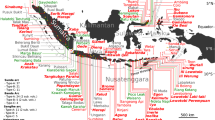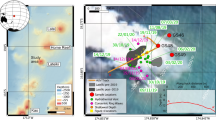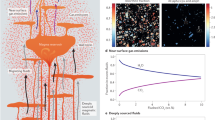Abstract
THE fumarole activity following and continuing after the great Katmai eruption of June, 1912, has provided south-western Alaska with the first among the natural wonders of the world. The volcanic gases force their way to the surface over an area of more than fifty square miles. This area is covered with volcanic ash and pumice, largely distributed by an enormous flow of mud following the explosion of the Novarupta volcano, but preceding the outburst of Katmai ten miles to the eastward. The relatively coarse ash and pumice from Novarupta were not ejected to any considerable distance, but, falling locally, quickly melted the snow on the mountains, and, with the rainfall accompanying the eruption, slid down into the adjacent valleys, forming a viscous mass which poured down the Bering Sea slope of the peninsular axis for a distance of more than fifteen miles.
This is a preview of subscription content, access via your institution
Access options
Subscribe to this journal
Receive 51 print issues and online access
$199.00 per year
only $3.90 per issue
Buy this article
- Purchase on Springer Link
- Instant access to full article PDF
Prices may be subject to local taxes which are calculated during checkout
Similar content being viewed by others
Author information
Authors and Affiliations
Rights and permissions
About this article
Cite this article
SHIPLEY, J. The Nature of the Katmai Volcanic Gases and Encrustations. Nature 104, 595–597 (1920). https://doi.org/10.1038/104595b0
Issue Date:
DOI: https://doi.org/10.1038/104595b0
Comments
By submitting a comment you agree to abide by our Terms and Community Guidelines. If you find something abusive or that does not comply with our terms or guidelines please flag it as inappropriate.



